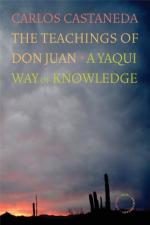|
This section contains 8,862 words (approx. 30 pages at 300 words per page) |

|
SOURCE: Phillipson, Mark. “Byron's Revisited Haunts.” Studies in Romanticism 39, no. 2 (summer 2000): 303-22.
In the following essay, Phillipson explores the themes of banishment, dislocation and return in Don Juan, contending that Byron's characters often return in ghostly ways to places past and the Byronic hero is “more phantom than man.”
Before he left England in a flurry of scandal, and before he created that most disillusioned of expatriates, Childe Harold, Lord Byron was irresistibly drawn to self-exile. In particular he paid close attention to the example of Shakespeare's misanthropic exile, Timon of Athens. Not only did Byron fashion Harold in the mold of Timon, arranging for his character to escape, like the disillusioned Athenian, from the “heartless parasites of present cheer” (Canto I, line 75);1 three years before the splashy publication of Childe Harold's Pilgrimage Cantos I & II (1812), the young Lord Byron was looking in the mirror and seeing Timon...
|
This section contains 8,862 words (approx. 30 pages at 300 words per page) |

|


